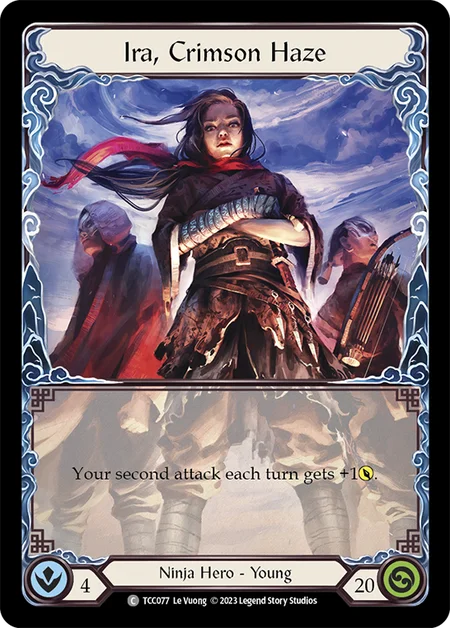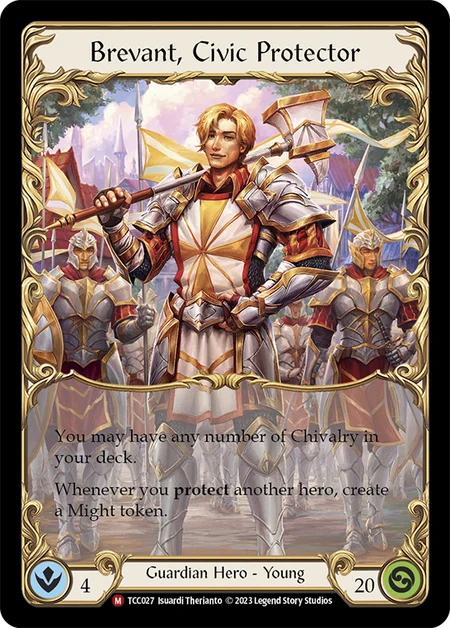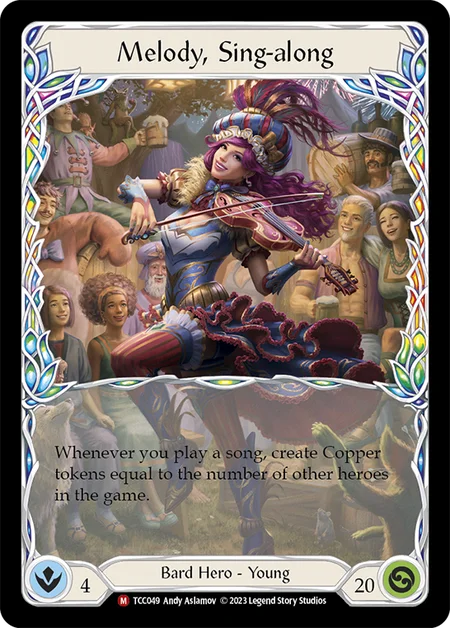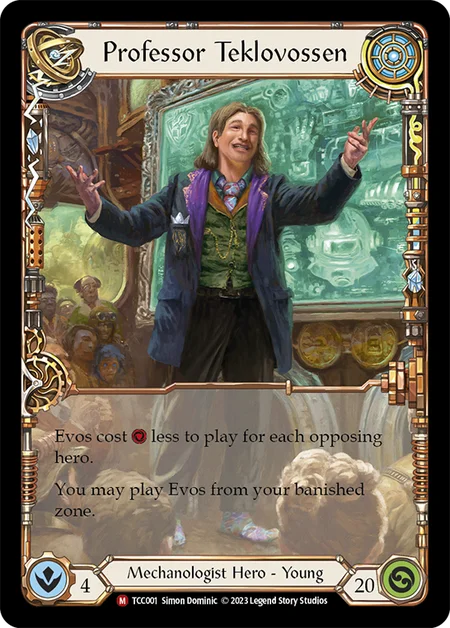Round the Table packages the gameplay of Flesh and Blood into a vetted experience. It can serve to introduce new players to the game, or to reintroduce Ultimate Pit Fight to invested players who may not have given the group format a chance. But having a product for that purpose is only the first step. The next steps are yours to take. We'll help you get off on the right foot.
The Full Pit Fight
The optimal configuration for Round the Table is a 4-player faceoff - and this gives opportunity to make that early, maybe even first, experience a social event. If you have a group of friends who are familiar with the game, feel free to toss the 4 decks on the table and let everyone choose. But if some of your participants are new, you'll want to make sure the experience is a good one.
Consider your options. Who's going to be the negotiator and dealmaker, offering their Guardian's shield and chivalry now for benefits later? Who well be the group hug, offering cards and effects to everyone through the sing-song ways of the exciting new Bard? Someone's got to be the villain, sneaking their Ninja swords through armor like bitter red thorns. And then there's the growing threat of a Mechanologist realizing the battlesuit of their dreams. Everyone brings something to the table, and is capable of impacting the battlefield at large.

Ninja is, and had been, a great place for players who are brand new to the game. In a vacuum, Ira's deck is pretty likely to win the table, as she plays a straightforward combative game and her wide attack pattern can be difficult to block out. The Crouching Tigers inherently synergize with her text box ability, which replicates the power that Fai gets out of his Phoenix Flames. This character is great at targeting a single opponent, which can be a way to attract all of the aggro at the table. Politics can be difficult when you are wielding the Edge of Autumn, so play it carefully and aim to explode when you cannot be stopped.

Brevant is such a cool character, capable of opening his own turn with 4-5 Might tokens alongside Earthlore Empowerments, triggering tower with ease. Chivalry makes for a perfect political bargaining chip; be sure to negotiate good terms for lending a hand to a defenseless player. Players shoud quickly pick up the playstyle of 'throw a big hit or set up for next time'; if the optimal way to use Chivalry doesn't click immediately, they'll still feel like they did Guardian things.

Melody sings songs and plays items (perfect for the Lorcana crowd), and all the while she's advancing her board state while distracting away from how powerful she is becoming in the background. She's not too be trifled with, and when she crescendos with her final act, she will leave the competition dead on the ground. I recommend passing Melody to that one guy in the group who loves to tell a story, because a Melody victory is a crowd pleaser. Play up the angle of, "Why come after me? I just gave you cards!", and keep anyone from looking too closely at your potential to pop off.
This deck brings up a point that's good to make here: before you start, encourage your players to give their decks a quick look, to get a sense of what they're capable of. Melody in particular might take an explainer, especially if a new player is gonna pilot her.

Professor Teklovossen can be especially terrifying. His ability to boost into free Evos is crazy strong. Getting fully set up is easy, letting you send 0-for-5 attacks at anyone at the table and keeping the pressure valve at maximum. Play this character fast and loose; boost is the name of the play, and it's a lesson everyone at the table will get to learn. If you're using this setup to teach new players the game, I highly recommend you play as the Professor yourself, as the deck can be technical to learn and your rising threat level inevitably makes you a shared target - not a position a new player wants to be in!
Each deck sets itself apart from each other, and the UPF setting furthers that unusual gameplay tempo. You might take several turns off in a row, each person making progress at different rates, inadvertently working together like a machine of cogs. At times the game can be slow, since not everyone is attacking and blocking every single turn, but the tension at the table is always in focus. Players wheel and deal to stay alive and keep the truth of their power well hidden: nobody is lacking, so don't let appearances deceive you.
Playing a table with multiple people can be a real challenge. Unlike in regular FaB, you will need to use your voice; advocating for your best outcome is a legitimate gameplay tactic. This is not a 1v1, where everything comes down to skill - but let's not go thinking that skill isn't at the heart of multiplayer! People skills are still skills, and they will help you win at the multiplayer table.
Table for Two
But what if you don't have 4 people sitting down to play?
Ira has long been the ambassador for Flesh and Blood, and she can still play that role here. A quick 2-player faceoff between Ira and the Professor provides an intentionally-balanced gameplay environment where you can teach them the game while introducing them to its depth through your own play. Just be sure to spell out for them what Teklovossen's long-term goal is, so as not to surprise them with maneuvers that break fundamental rules to the point it feels like you cheated them!
There's also something to be said for setting yourself up with an underdog deck. Playing as Brevant, even if you can't make full use of his abilities, shows off the polar strategies of 'go wide' vs. 'go tall' in a dynamic way, and has the added feature of representing 2 of the original 4 classes.
Bending the header above, can we use RTT with 3 players? I'd argue it's actually a very comfortable fit. Once again, I'd leave Melody out- her playstyle really needs bigger threats and more players to shine, and a one-turn kill feels awful to a new player- and I'd hand the other two players Brevant and Ira, according to their preferences. Be prepared to quickly become the shared target, as both players are likely to realize you're the bigger threat both in experience and in building your Evo suit. Brevant can help cover Ira's aggressive posture with Chivalry blocks, giving both players a feeling of camaraderie and shared accomplishment - until they realize that, with you gone, they need to face each other!
Round 2?
Because each deck plays so differently, there's plenty of replayability to be found in swapping decks. But of course, this product is a boxed introduction to Ultimate Pit Fight, so when you're ready simply pick up another Blitz deck and give it a try! Quick and easy $12 expansions are already on the shelf at your local game story, though the decks in RTT are built to a much greater degree of performance and competency than preconstructed Blitz decks.
This is a great place to note the importance of communicating a shared objective for your group. It'd be easy for one player to swap out Melody for their competitive Rhinar deck and change the tone completely. It's critical that everyone agrees on the purpose and tone of the game. Are we here to prove whose deck can withstand the storm and come out victorious by any means necessary? Or are we looking for a more social experience, where we can laugh at a bad turn of events and put off the kill shot to let someone play another round?
When you first crack open Round the Table, you're being presented with a packaged and intentional gameplay experience. But in the longterm, RTT's purpose is to serve as a structure and materials for further adventures in Rathe. Don't hesitate to modify the decks, or take them apart entirely to support competitive Blitz or Classic Constructed. Make of it whatever you will, and don't feel beholden to exactly what's been given to you.




